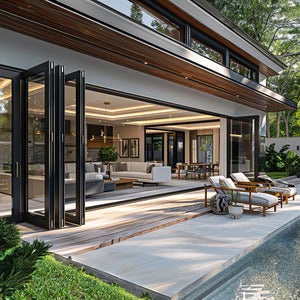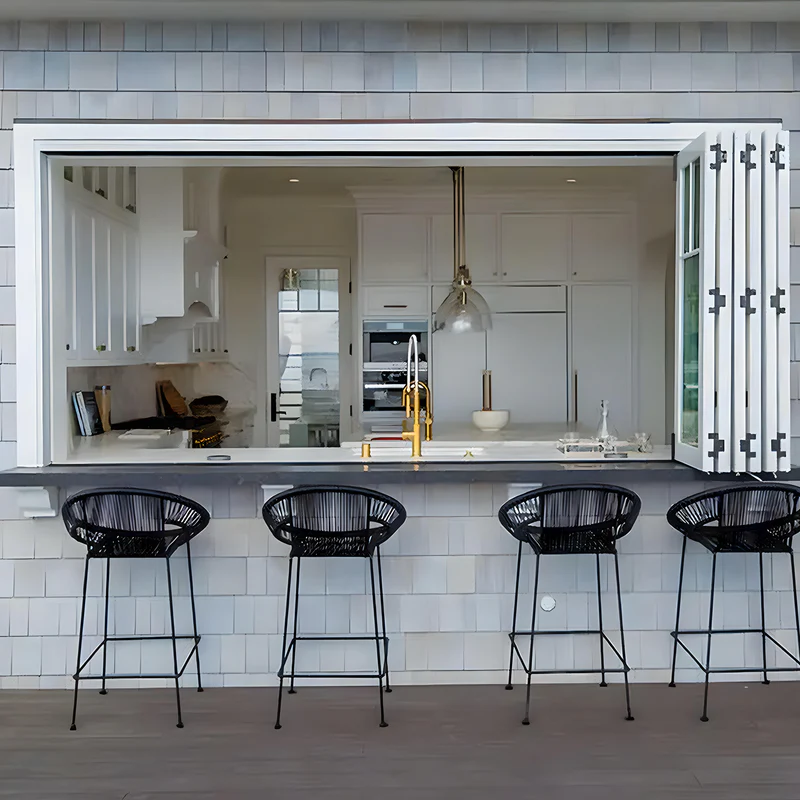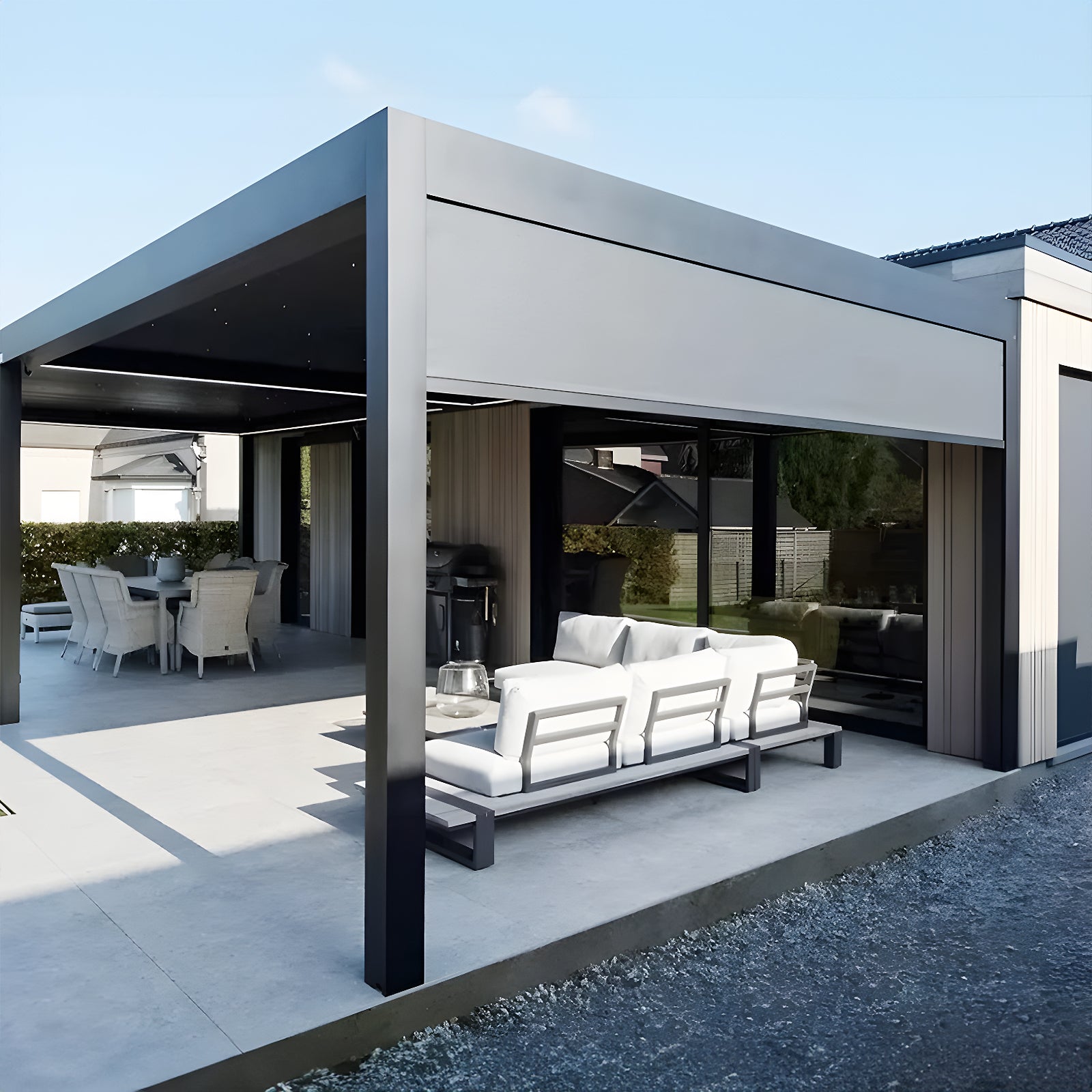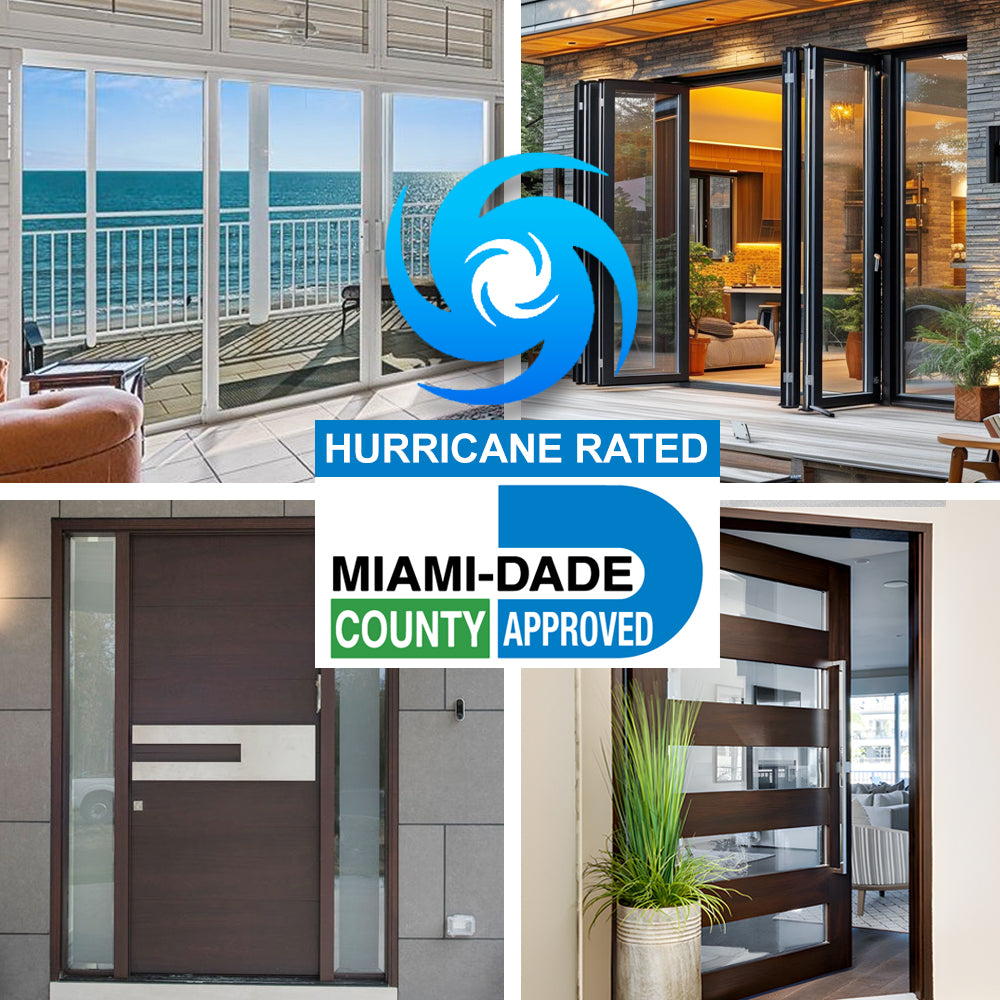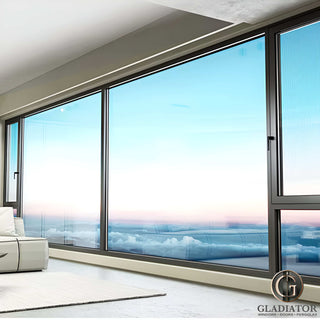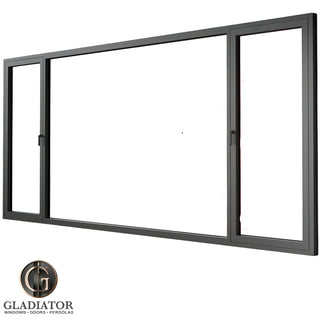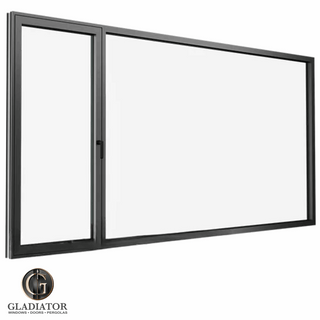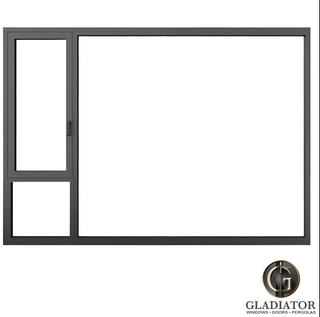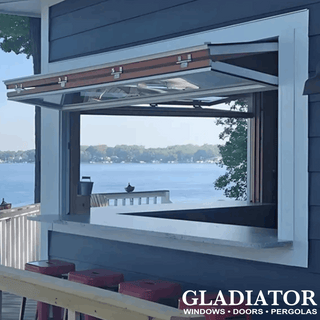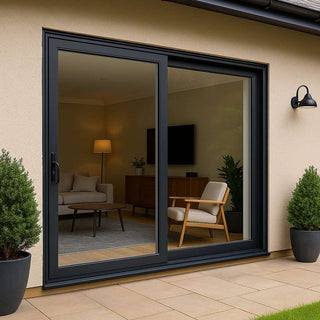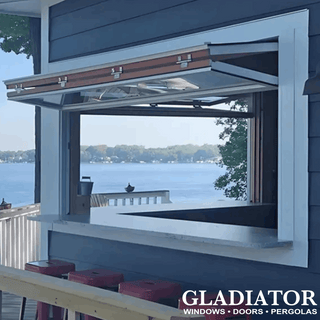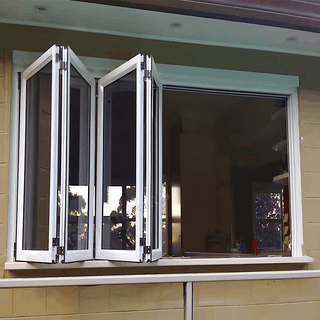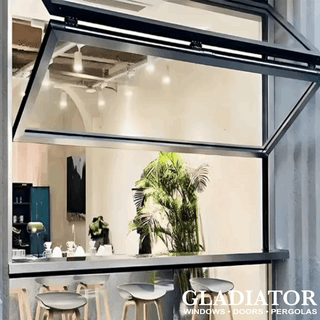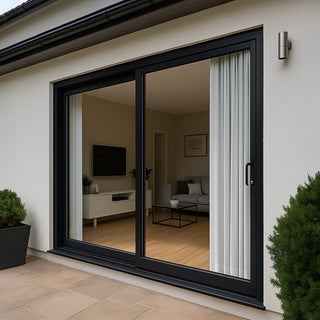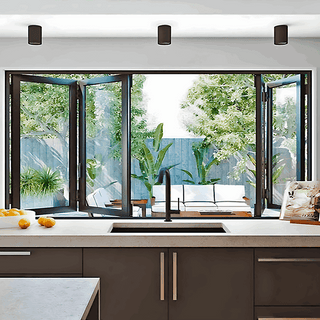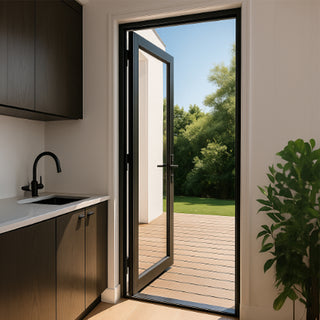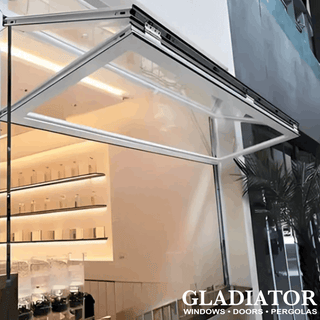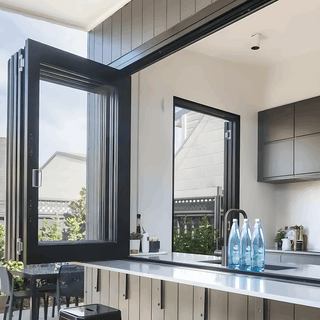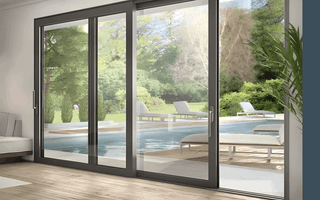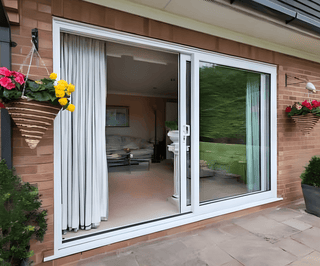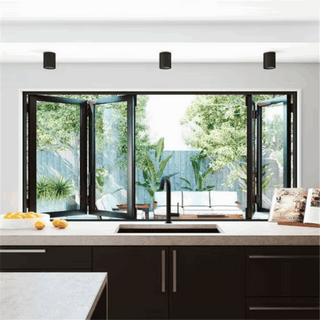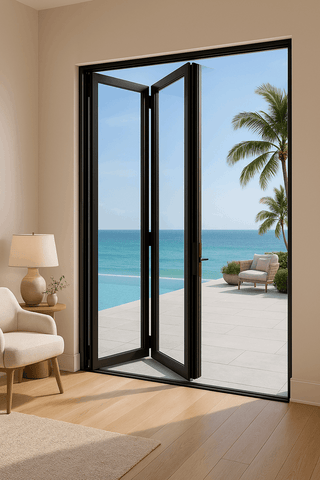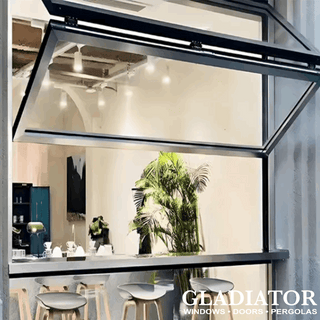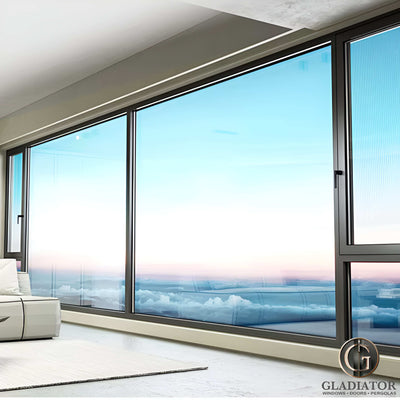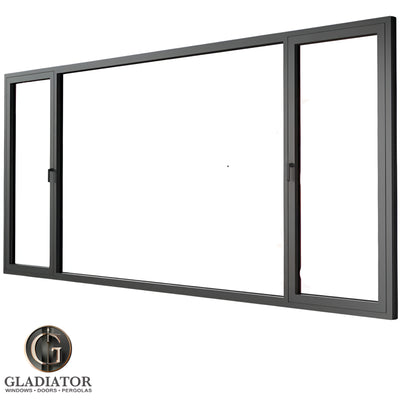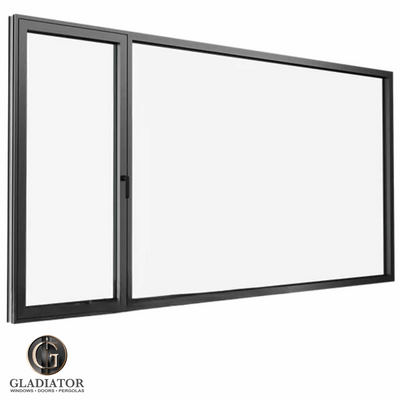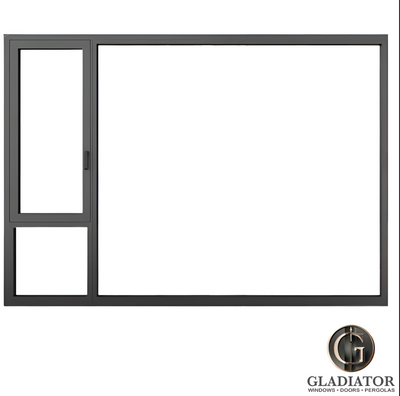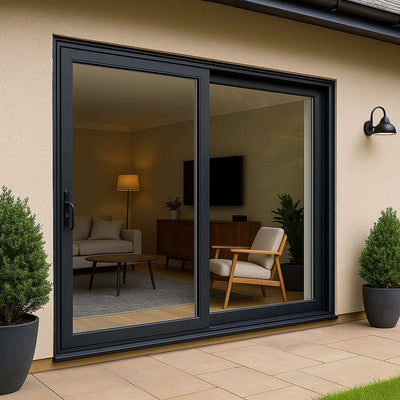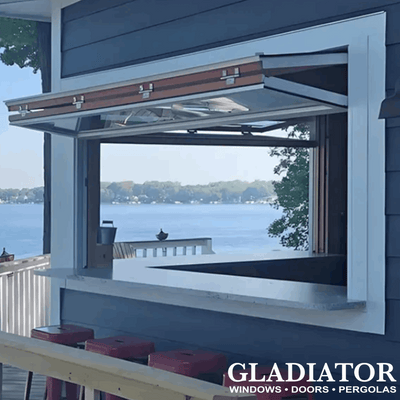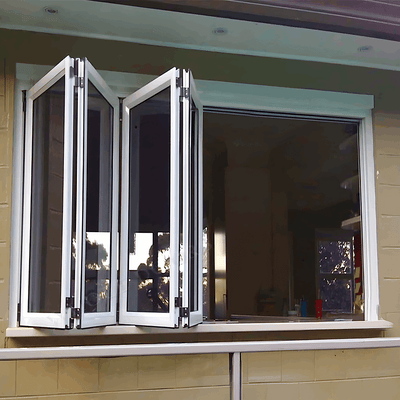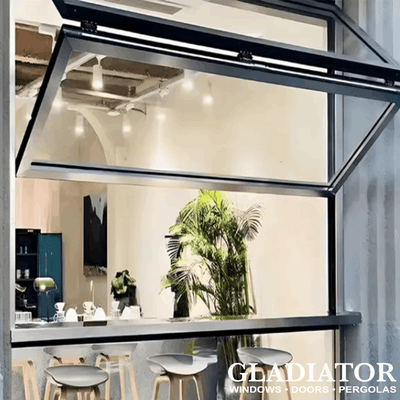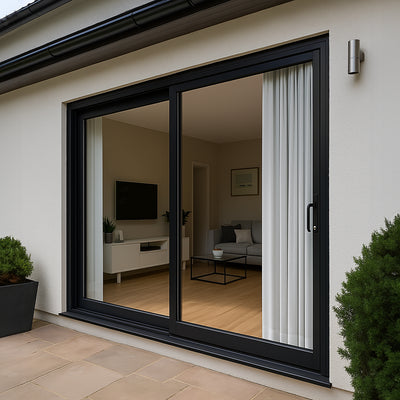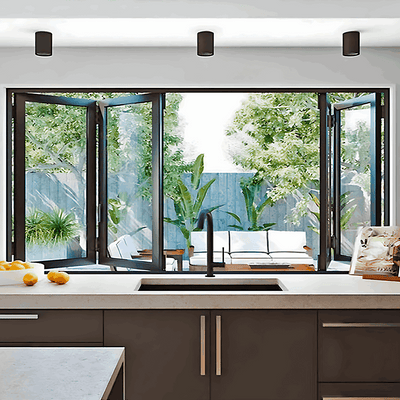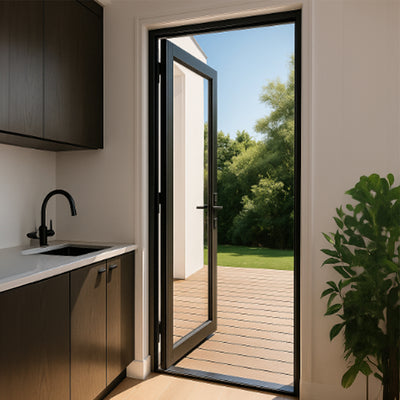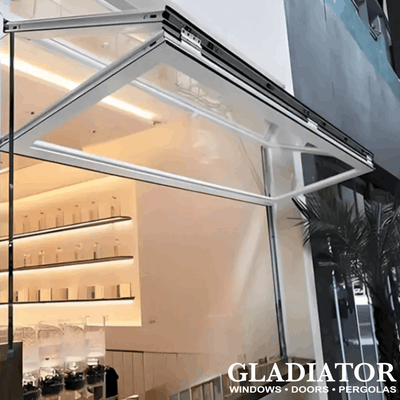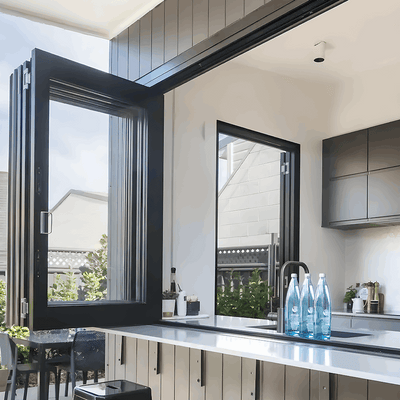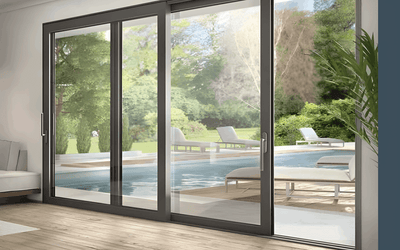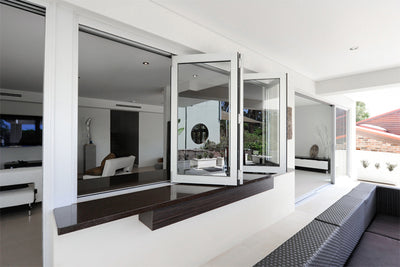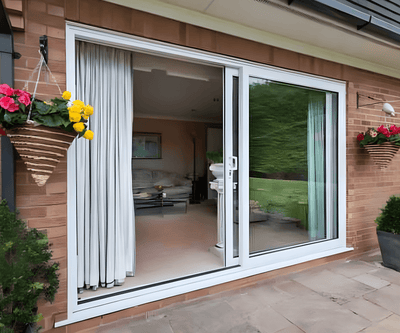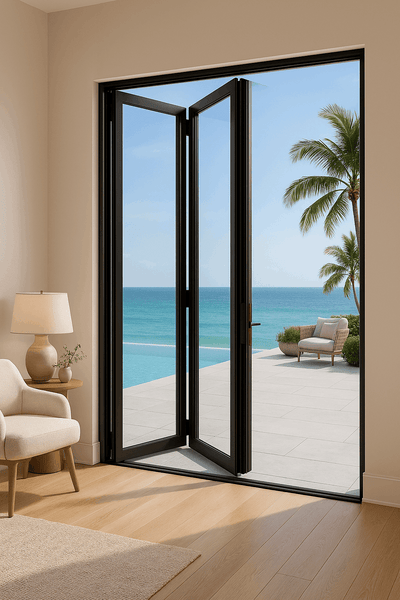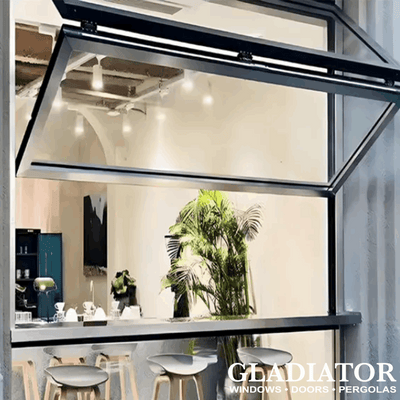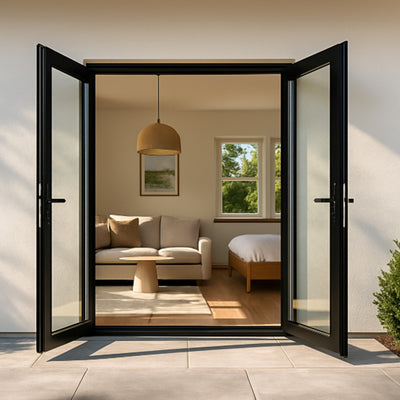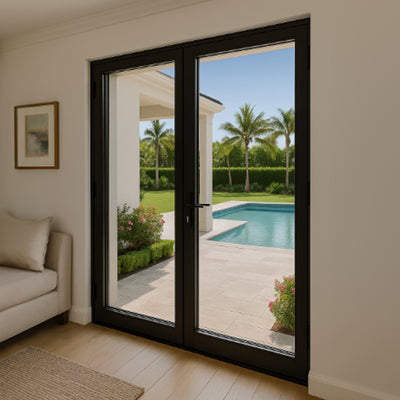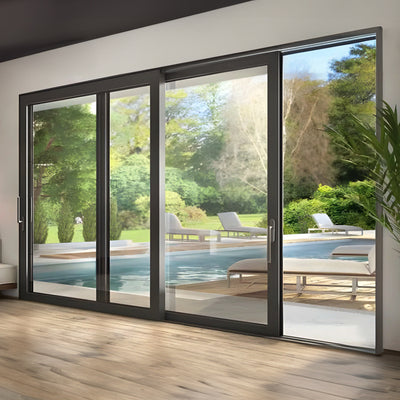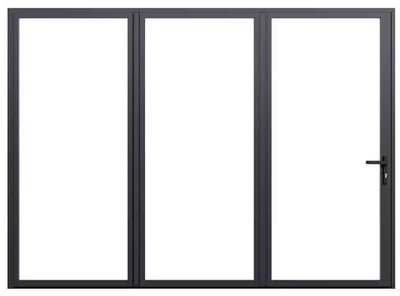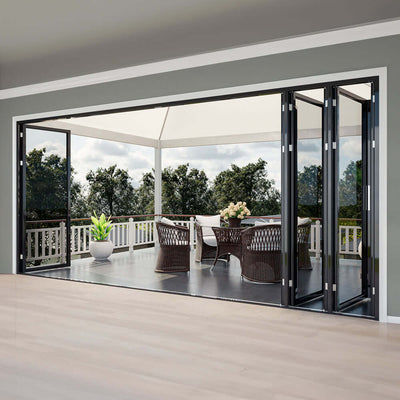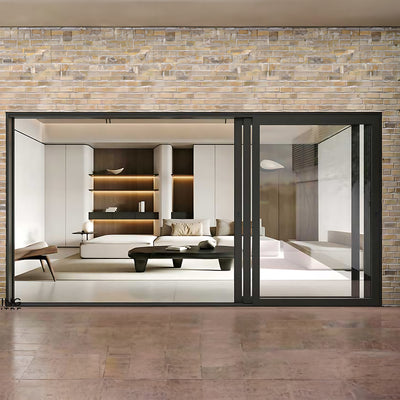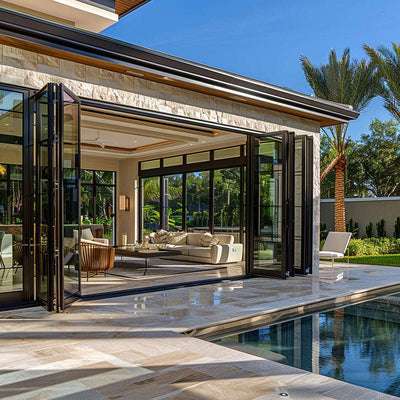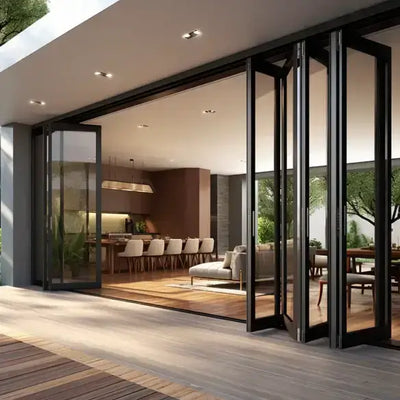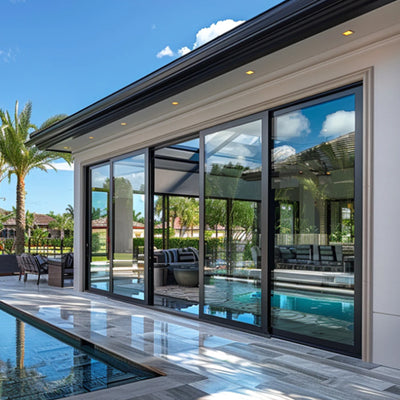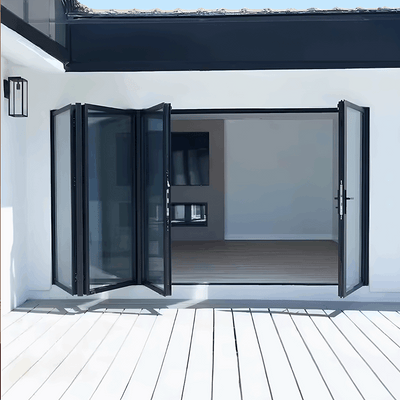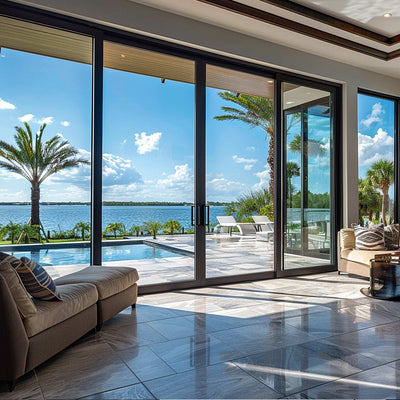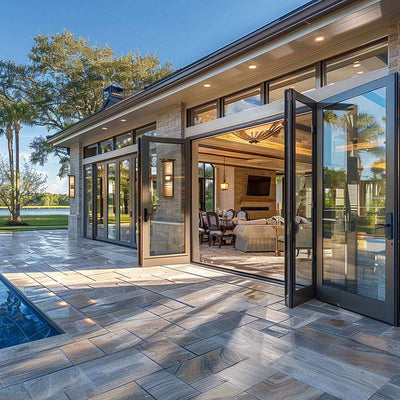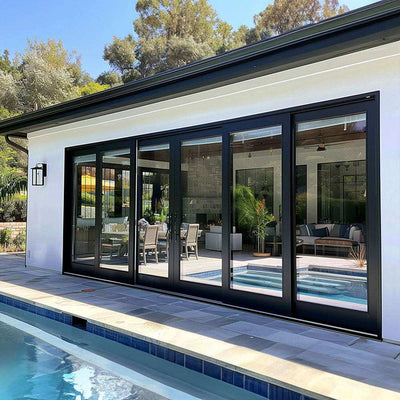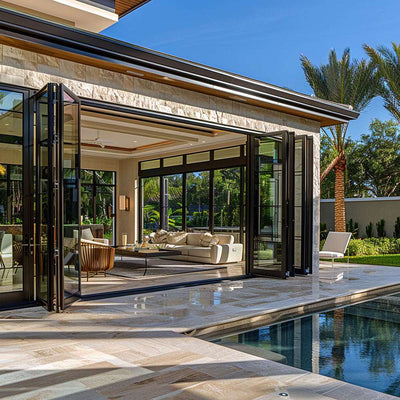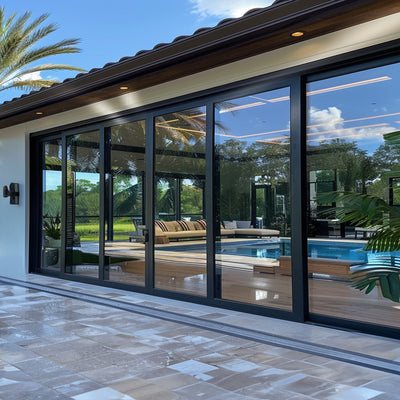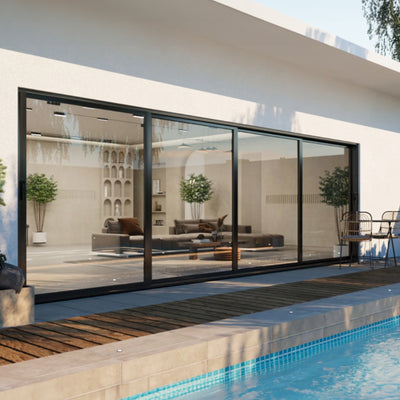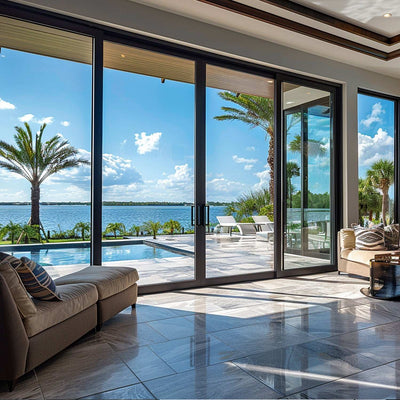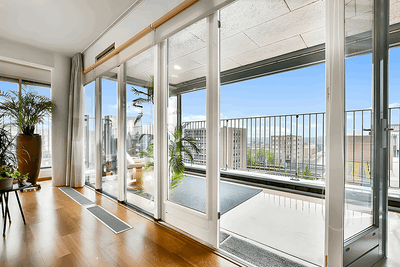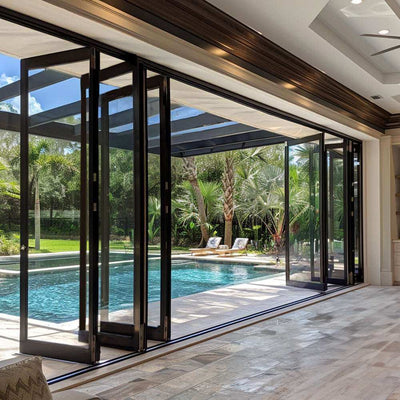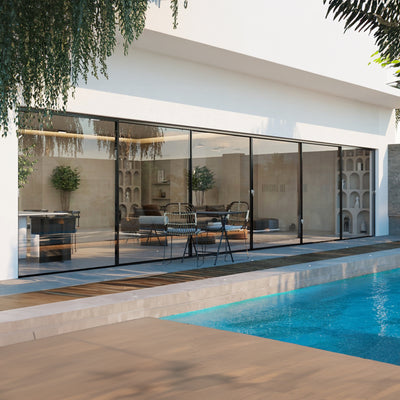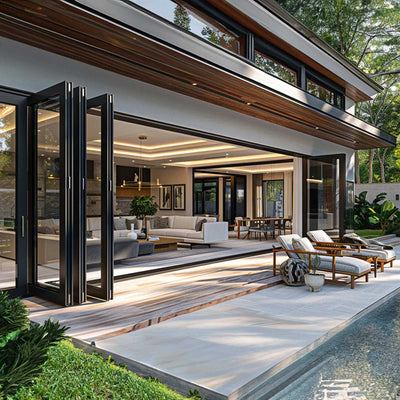Why Modern Pivot Doors Are Transforming Home Design
Modern pivot doors are quickly changing residential architecture, blending functionality with striking design. Unlike traditional hinged doors, pivoting doors rotate on a vertical axis. This creates a grand, sweeping movement, turning a simple entryway into a dramatic experience. This change in how we interact with doors significantly impacts the flow and feel of our living spaces. For instance, the impressive size of many modern pivot doors instantly elevates a home's entrance, making a memorable first impression.
Redefining Entrance Experiences
This dramatic entrance isn't just about looks; it also improves functionality. The pivot mechanism allows for much larger and heavier doors than traditional hinges. This lets homeowners choose oversized designs that maximize natural light and create a seamless transition between indoors and outdoors. A pivot door also needs less clearance space than a swinging door. This provides valuable flexibility for furniture arrangement and maximizes usable floor space, especially helpful in smaller homes or apartments.
The Growing Popularity of Pivot Doors
A striking trend in modern architecture is the increasing use of modern pivot doors. Cognitive Market Research projects the global pivot door market to reach USD 10,542.5 million by 2024, with Europe holding over 30% of the market share. This growth reflects homeowner preferences for open-concept designs and seamless indoor-outdoor flow. The pivot door market in Europe is forecast to grow at a CAGR of 3.5% from 2024 to 2031, demonstrating continued demand for these doors in renovations and new construction. Pivot doors appeal to homeowners because of their distinctive aesthetic and space-saving features, making them suitable for both residential and commercial applications. You can find more information in Our Sitemap.
From Functional Element to Design Statement
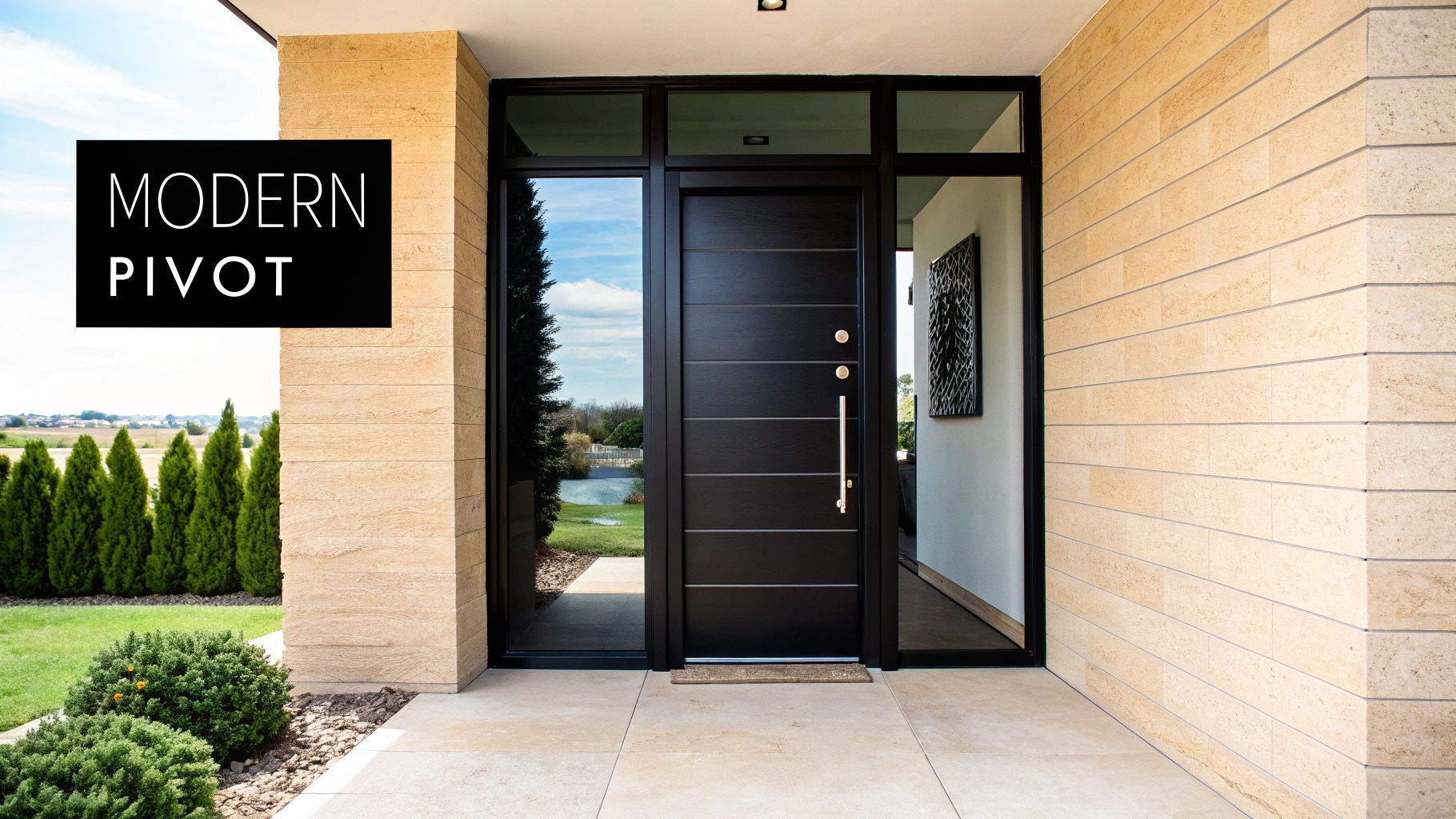
Besides practical benefits, modern pivot doors allow for unique self-expression. They can be made from various materials, from sleek glass and metal to warm wood. This lets homeowners create a personalized entryway that reflects their individual style. A pivot door's size and presence naturally make it a focal point, transforming a functional element into a bold design statement. This blend of form and function makes modern pivot doors stand out, explaining their growing presence in contemporary homes. They represent a shift in how we view entrances – moving beyond simple passageways to create impactful design moments.
The Evolution of Pivot Door Design Through History
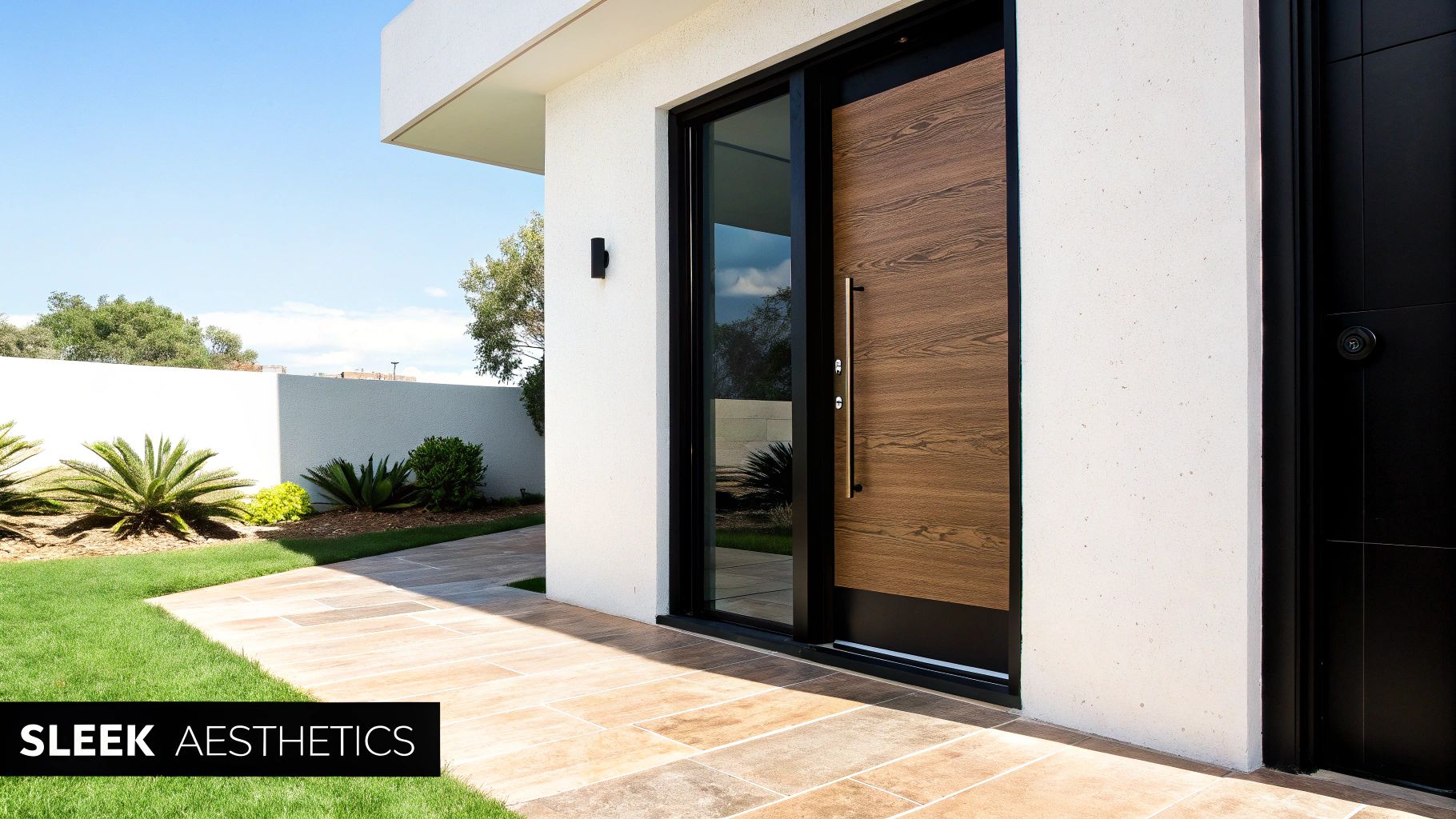
From ancient times to the present day, pivot doors have offered a distinct approach to architectural entrances. Their unique design, revolving around a central pivot point instead of traditional hinges, provides advantages in both functionality and aesthetics. This core concept has endured for centuries, adapting and evolving alongside architectural styles and technological progress. The journey of the pivot door reveals a captivating blend of tradition and innovation.
Early Examples of Pivot Mechanisms
Pivot doors boast a rich history, dating back to ancient civilizations. These impressive structures were utilized in monumental buildings such as the Roman Pantheon, which featured massive double doors measuring an astounding 24 feet (7.3 meters). This historical application demonstrates the architectural versatility inherent in pivot door design.
Modern pivot doors continue this legacy of adaptability, incorporating modern innovations. One key advancement is the development of invisible mechanisms. These mechanisms integrate the pivot hinge system directly into the door itself.
This integration creates a smooth, elegant opening action that enhances both functionality and visual appeal. It also simplifies installation, making pivot doors a more practical choice for contemporary building projects. Learn more about these innovative mechanisms here: Modern Pivot Doors: Towards the Invisible Mechanism. You can also explore additional product information at: Our Products Sitemap.
From Traditional Materials to Modern Innovations
Early pivot doors were typically constructed from heavy materials like wood and bronze. These doors relied on simple, yet effective, pivot systems. However, the use of these traditional materials presented limitations in terms of size and weight.
Modern advancements in materials science have led to significant improvements in pivot door construction. The use of high-strength steel and aluminum for pivot mechanisms now allows for the creation of substantially larger and heavier doors. This is achieved without compromising smooth operation.
Furthermore, the introduction of glass as a primary door material has dramatically expanded the aesthetic possibilities. Glass pivot doors offer a sleek, contemporary appearance while maximizing natural light.
The Rise of Modern Pivot Door Systems
The evolution of pivot door design has resulted in the sophisticated systems available today. These modern systems utilize precision engineering, high-quality materials, and a range of innovative features. These advancements haven't just improved functionality and durability; they've also broadened the design potential of pivot doors.
Contemporary architects are now pushing the boundaries of scale and incorporating features like integrated automation and advanced security systems. This means modern pivot doors can be seamlessly integrated into smart home technology, further enhancing their convenience and appeal.
Essential Features of Premium Modern Pivot Systems
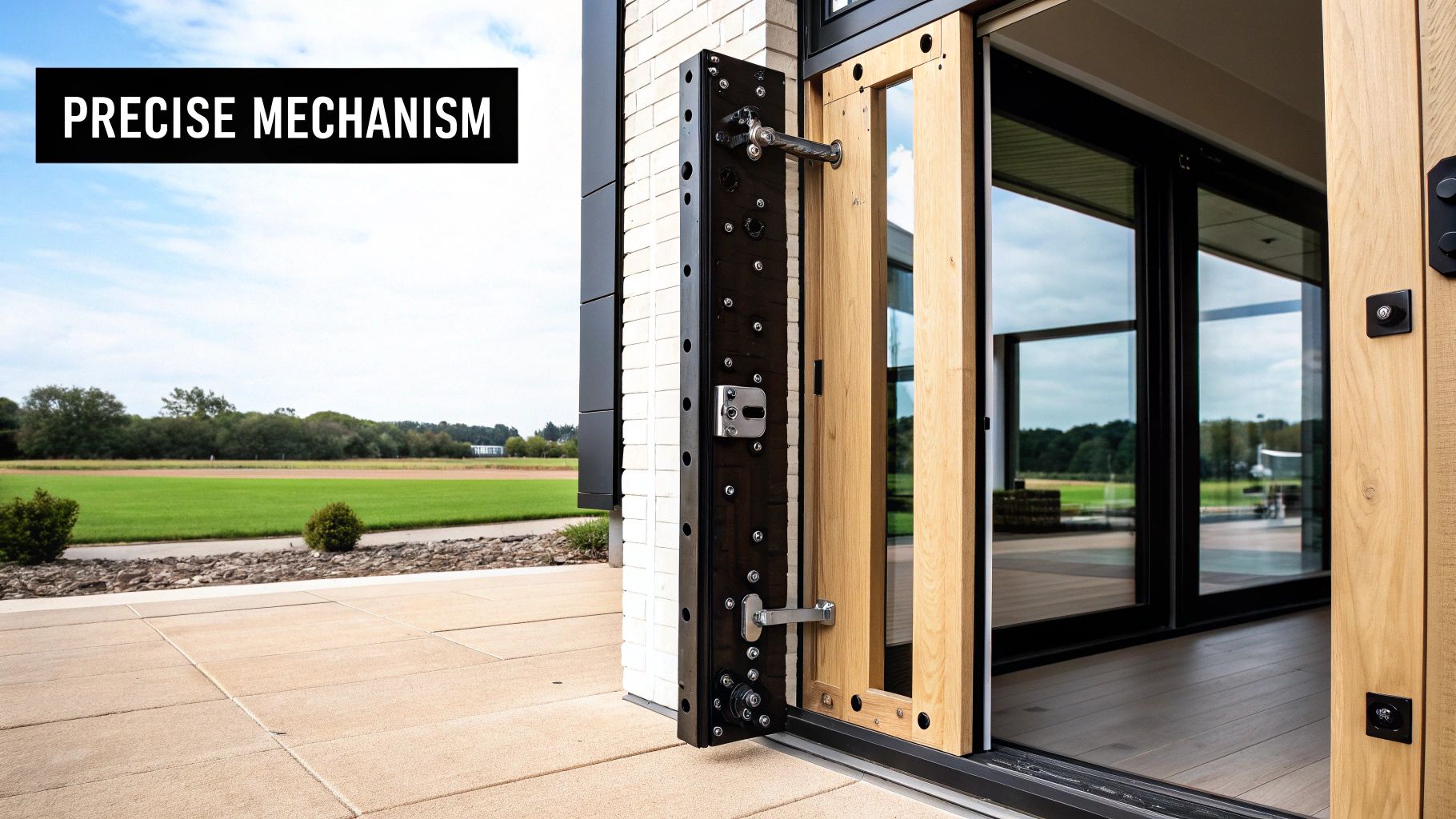
Modern pivot doors offer a striking visual appeal. They also represent a significant advancement in door system technology. But what truly sets a premium modern pivot system apart from a standard door? It's more than just the initial impression. This section explores the key features that contribute to their superior performance and longevity, showcasing how these doors merge innovative engineering with sophisticated design.
The Core of the System: Pivot Mechanisms
The pivot mechanism is the heart of any modern pivot door system. This specialized hardware allows the door to rotate smoothly around a vertical axis. Premium systems employ high-quality materials like high-strength steel or aluminum for maximum durability and stability.
These robust materials ensure the mechanism can support substantial door weights, often exceeding 1,000 pounds. This robust construction guarantees smooth operation for years, even with frequent use. Many advanced pivot mechanisms also incorporate adjustable closing speeds and dampening systems. These additions prevent slamming and provide a controlled, quiet close.
Material Matters: Balancing Weight and Performance
The materials used to craft a modern pivot door greatly impact its performance and resilience. Glass is a popular choice for its sleek, modern aesthetic. However, it's important to consider factors like weight and insulation.
Thicker glass panels provide better soundproofing and energy efficiency, but they also add significant weight. This requires a stronger pivot mechanism and careful structural planning during installation. Alternative materials like wood and composites offer unique aesthetic options. However, they have specific maintenance needs depending on the climate and exposure to the elements.
To help illustrate the differences in materials, let’s take a look at the following table:
Modern Pivot Door Materials Comparison This table compares common materials used in modern pivot doors, highlighting their key properties, advantages, and considerations for homeowners.
| Material | Weight | Durability | Maintenance | Insulation Value | Cost Range |
|---|---|---|---|---|---|
| Wood | Moderate | High, with proper sealing | Regular sealing and painting/staining required | Moderate | Moderate to High |
| Steel | High | Very High | Requires rust-proofing and occasional repainting | Low | High |
| Aluminum | Low to Moderate | High | Minimal, occasional cleaning | Moderate | Moderate |
| Glass | High (depending on thickness) | High (tempered or laminated) | Easy to clean | Moderate to High (depending on type) | Moderate to High |
| Composites | Low | High | Minimal | High | Moderate to High |
As you can see, each material presents a unique combination of factors to consider when selecting the perfect pivot door.
Weathersealing: From Luxury to Practicality
Effective weathersealing is crucial for transforming modern pivot doors from stylish statements into practical, everyday entrances. Innovations in weatherstripping technology have made these systems incredibly airtight and weather-resistant.
Multi-layered gaskets and specialized seals, often concealed within the door frame, minimize drafts and prevent water infiltration. This allows modern pivot doors to perform exceptionally well, even in harsh climates, unlike earlier versions. They effectively maintain interior comfort and prevent energy loss, increasing their value as a long-term investment.
Security and Automation: The Smart Pivot Door
Modern pivot systems also incorporate advanced security features and automation options. Multi-point locking systems, integrated into the pivot mechanism, offer enhanced security compared to traditional single-bolt locks.
The rise of smart home technology allows seamless integration of pivot doors with automated systems. This enables features like remote control operation, keyless entry, and integration with security alarms, offering both convenience and peace of mind. These advancements ensure modern pivot doors are not just aesthetically pleasing, but also intelligent components of a secure and comfortable home.
You might be interested in: Exploring more about windows and doors in our blog sitemap.
Statement-Making Trends in Modern Pivot Door Design
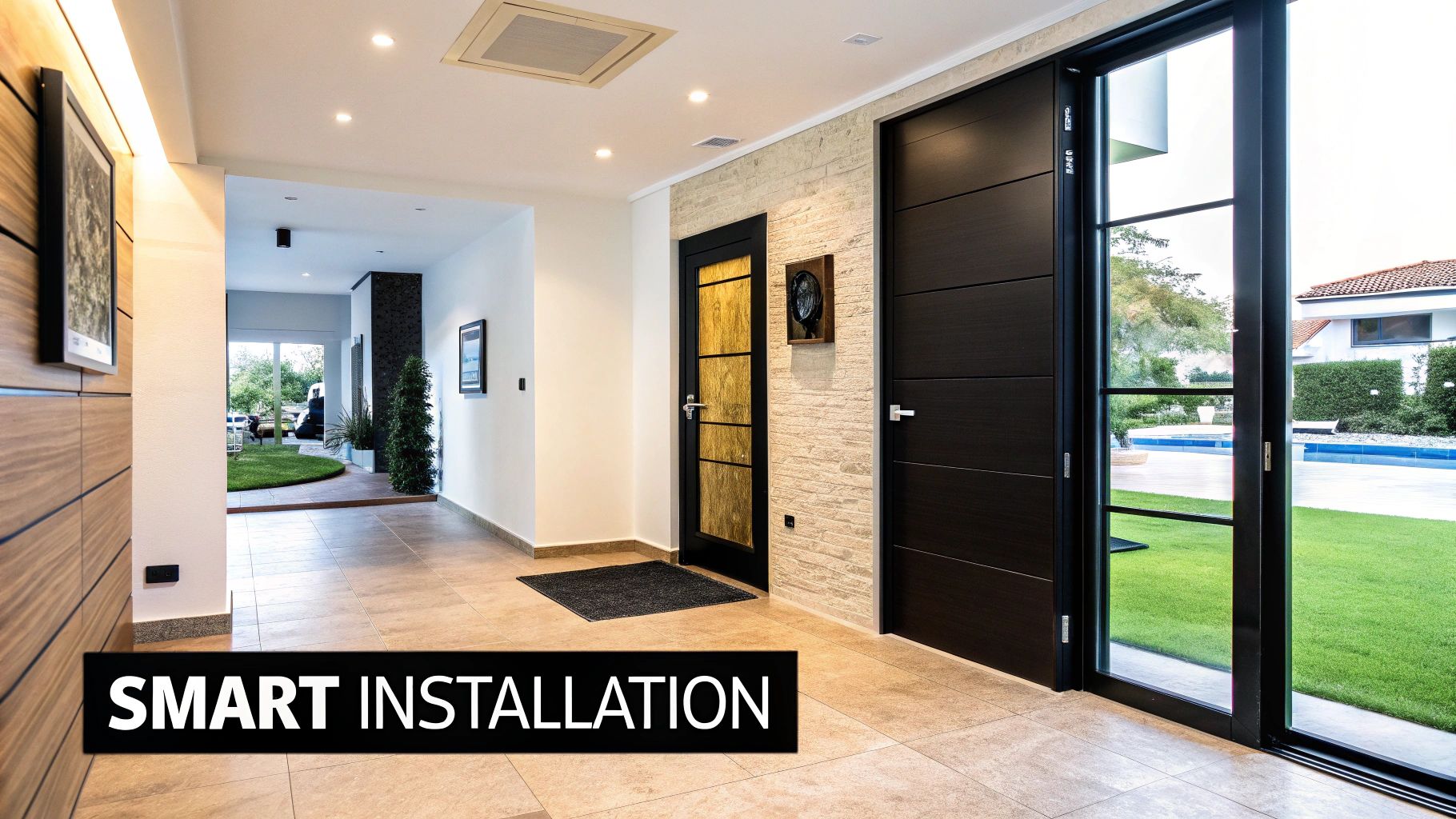
Modern pivot doors have evolved beyond simple entryways. They've become impactful design elements that elevate a home's architectural appeal. Leading designers are using these doors to craft truly unforgettable spaces, pushing the boundaries of size, material, and integration with the surrounding environment. Let's explore the exciting trends shaping modern pivot door design and how these features transform entrances into works of art.
Oversized Proportions and Dramatic Finishes
One of the most striking trends is the shift towards oversized proportions. Modern pivot systems, unlike traditional hinges, can handle significantly larger and heavier doors. This allows architects and homeowners to create grand, imposing entrances that evoke a sense of awe.
These impressive sizes are often complemented by dramatic finishes that amplify their impact. Imagine a 10-foot tall, blackened steel pivot door with a textured surface—a powerful, industrial-chic statement. This trend reflects homeowners' desire for unique designs that set their homes apart. The Trend Toward Pivot Doors provides further insights into this growing preference.
Unexpected Material Combinations and Lighting Integration
Designers are also exploring unexpected material combinations. Moving beyond traditional wood and metal, they're incorporating materials like glass, concrete, and even reclaimed wood. This experimentation with materials allows for truly unique and personalized designs.
Furthermore, lighting integration is becoming increasingly important. Strategically placed LED lighting can highlight the door's texture and create a dramatic effect, especially at night. This transforms the entrance into a captivating focal point.
Custom Hardware and Innovative Surface Treatments
Details matter, and custom hardware plays a crucial role. Bespoke handles, pulls, and pivot hinges, crafted from high-quality materials, add a touch of luxury and refinement. These details allow for personalized touches that harmonize with the home's overall design.
Innovative surface treatments are also gaining traction. Techniques like sandblasting, etching, and specialized coatings create unique textures and patterns. These bespoke finishes turn a functional door into a true work of art.
Pushing Boundaries: Asymmetrical Designs and Integrated Side Panels
Architects are pushing design boundaries further with asymmetrical configurations and integrated side panels. Asymmetrical pivot doors create a dynamic, unconventional look, adding an element of surprise.
Integrated side panels, made from glass or matching materials, extend the visual impact of the door and increase natural light. This blurs the lines between indoors and outdoors, fostering a seamless transition. These innovations showcase the incredible versatility and design potential of the modern pivot door.
Practical Benefits Beyond The Dramatic Visual Impact
Modern pivot doors are undeniably eye-catching. But their appeal goes far beyond just looks. These doors offer a variety of practical advantages that can truly enhance your home's functionality and livability. From space maximization to energy savings, a modern pivot door can be a worthwhile investment.
Space Optimization and Improved Traffic Flow
The unique design of a modern pivot door offers surprising space-saving benefits. Unlike traditional swinging doors, pivoting doors rotate on a vertical axis. This minimizes the required clearance space, which is especially helpful in smaller rooms or tight layouts. This allows for better furniture placement and more fluid movement. Imagine a narrow hallway where a swinging door would obstruct passage. A modern pivot door neatly eliminates that problem, optimizing the usable space. This improved flow is also beneficial in high-traffic zones like entryways and hallways, making transitions between rooms smoother.
Enhanced Energy Efficiency and Noise Reduction
Well-engineered modern pivot doors provide superior sealing compared to standard doors. This leads to better energy efficiency by reducing drafts and heat transfer. Multi-layered gaskets and specialized seals create a tight barrier. This helps maintain a comfortable indoor temperature year-round and lowers energy bills. These tight seals also significantly reduce noise infiltration. The solid construction of the door itself, often featuring thick panels of insulated glass or solid core materials, further dampens sound, creating a quieter and more tranquil living space.
Accessibility and Longevity
Modern pivot doors can be designed with accessibility in mind. Their effortless operation, even for large, heavy doors, makes them a great option for people with mobility issues. The robust construction and high-quality materials used in premium pivot systems ensure long-lasting performance and durability. These doors are built to withstand regular use and maintain smooth operation for years. This makes them a practical long-term investment, not just a design statement. They provide enduring value and enhance the overall quality of your home.
Comparing Pivot Doors To Other Options
To understand the full value of pivot doors, it's helpful to compare them with other door types. The following table highlights key differences:
To help illustrate these points, let's look at a comparison table:
| Feature | Modern Pivot Doors | Traditional Hinged Doors | Sliding Doors |
|---|---|---|---|
| Space Efficiency | Excellent | Good | Excellent |
| Traffic Flow | Excellent | Fair | Good |
| Energy Efficiency | Excellent | Good | Fair |
| Noise Reduction | Excellent | Good | Fair |
| Accessibility | Excellent | Good | Good |
| Visual Impact | High | Low | Moderate |
| Cost | High | Low | Moderate |
This table summarizes the key differences between the three door types. It highlights the advantages of modern pivot doors in areas like space efficiency, traffic flow, energy efficiency, and noise reduction.
As the table shows, while the initial cost of a modern pivot door can be higher, its performance and benefits across several categories make it a strong contender. For more information, check out our door collection. In the end, choosing the right door depends on your individual needs and priorities. However, the combination of practical advantages and dramatic visual impact makes modern pivot doors a valuable enhancement for any contemporary home.
Critical Installation Factors for Successful Pivot Doors
The striking visual appeal of a modern pivot door relies heavily on proper installation. While the innovative design is captivating in itself, a seamless installation ensures smooth functionality and extends the door's lifespan. This section explores the key aspects of installing a modern pivot door, emphasizing structural requirements, potential challenges, and steps for achieving a successful outcome.
Structural Reinforcement: The Foundation of a Stable Pivot Door
Modern pivot doors, especially larger or oversized models, can be quite weighty. This significant weight necessitates robust structural support to guarantee stability and prevent issues down the line. Before beginning the installation, a thorough assessment of the wall’s structural integrity is paramount. Reinforcement may be required, particularly in older homes or when replacing a smaller, lighter door. This might involve adding supplementary framing or bolstering existing structures. Think of this as laying a solid foundation – it’s the essential, unseen support that ensures everything built upon it remains secure.
Floor Preparation and Threshold Details
Proper floor preparation is another crucial factor. The floor must be perfectly level to ensure the door operates smoothly. An uneven surface can cause the door to bind, stick, and put undue stress on the pivot mechanism, leading to premature wear and tear. The threshold, the strip at the bottom of the doorway, also plays a vital role in weatherproofing and smooth transitions. A correctly installed threshold minimizes drafts, prevents water from seeping in, and ensures a smooth transition between interior and exterior flooring.
Selecting a Qualified Installation Professional
Choosing the right installer is just as crucial as choosing the right door. Installing a modern pivot door is a specialized task demanding expertise and meticulous attention to detail. Seek out installers with a demonstrable track record of working with pivot systems specifically. Don't hesitate to request references and view examples of their past projects. A qualified installer will understand the specific requirements of these doors, ensuring a flawless installation and minimizing the risk of future problems. It’s akin to selecting a surgeon for a delicate procedure—experience and specialized knowledge are of the utmost importance.
Asking the Right Questions and Evaluating Experience
When interviewing potential installers, ask pointed questions about their experience with modern pivot doors. Inquire about their methods for structural reinforcement, floor preparation, and threshold installation. A knowledgeable installer will confidently address these technical details. They should also provide a realistic timeline and clearly outline the installation process. This thorough approach reflects their understanding of the complexities involved in successful pivot door installation.
Installation Timeline and Preparing Your Space
A typical modern pivot door installation can take several days, depending on the project's complexity. The installer will likely require access to both sides of the doorway. Clear the area around the doorway of any furniture or obstructions to allow the installer ample space to work efficiently. Understanding the expected timeline and adequately preparing your space helps minimize disruptions and ensures a smoother, more efficient installation process. This preparation allows the installer to focus on the task at hand, ultimately delivering a beautiful and functional result—a modern pivot door that truly enhances your home’s entrance.
Integrating Modern Pivot Doors With Your Home's Style
A modern pivot door is more than just an entrance; it's a design statement. Its impact relies heavily on how well it integrates with your home's existing style. This section explores creating a cohesive and impressive entrance by harmonizing a modern pivot door with various architectural styles. From minimalist to traditional, we'll cover the key design strategies that make a modern pivot door the perfect addition to your home.
Balancing Bold Presence With Design Harmony
Modern pivot doors are often large and visually striking. Careful planning is crucial to prevent them from overpowering the space. The aim is to achieve balance, where the pivot door complements, rather than dominates, the overall aesthetic. This can be accomplished by considering the door's material, finish, and surrounding elements. For example, a sleek, frameless glass pivot door can enhance the clean lines and spacious feel of a minimalist setting without disrupting the visual flow.
Lighting Placement: Enhancing Day and Night Impact
Lighting plays a significant role in how your modern pivot door is perceived, both day and night. Natural light through a glass pivot door can brighten interior spaces. Meanwhile, strategically placed artificial lighting can highlight its features after dark. Uplighting at the base of a pivot door, for instance, creates a dramatic silhouette at night. Recessed lighting in the ceiling above can emphasize texture and create a warm, welcoming atmosphere.
Material Selection and Hardware Coordination
Selecting materials and hardware that match your existing décor is vital for a cohesive design. In a traditional home, a wood pivot door with classic hardware blends seamlessly. For industrial interiors, a steel pivot door with blackened hardware might be more appropriate. The hardware itself – handles, pulls, and pivot hinges – should complement both the door's material and the home's overall style. These details are the finishing touches that complete the cohesive look.
Minimalist, Traditional, Industrial, and Transitional Styles
-
Minimalist: Frameless glass or sleek metal pivot doors in neutral colors preserve the clean lines and open feel of minimalist spaces.
-
Traditional: Wood pivot doors with classic hardware or glass panels with intricate detailing complement a traditional aesthetic.
-
Industrial: Steel or metal pivot doors with exposed hardware and raw finishes enhance the industrial style's rugged appeal.
-
Transitional: Pivot doors blending traditional and modern elements, like a wood door with sleek metal hardware, create a balanced transitional look.
Working With Designers to Achieve Your Vision
Collaborating with an experienced designer can be incredibly helpful when incorporating a modern pivot door. Designers understand how different elements work together to create a unified space. They can guide you through the selection process, ensuring the door complements your home's architectural style, current décor, and personal taste. A designer can help you visualize the final result and bring your vision to life, creating a truly striking architectural feature. Learn more in our article about Gladiator Windows and Doors Sitemap.
Transform your home with a stunning modern pivot door from Gladiator Window and Doors. We offer a wide range of customizable options to perfectly suit your style and needs. Visit us today to explore our collection and request a quote!








